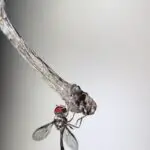Where Do Flies Go in the Winter?
When it comes to winter, flies can become an even bigger nuisance. They have a high metabolism during the warmer months but are reduced during the colder months. In order to stay warm, flies must conserve their energy and store fat for the cold months. This is why you may notice that flies in your home buzz around the windows on sunny days. That’s because they are searching for warmth.
There are more than 100,000 different species of flies. They’re found in many different places and respond to climate changes. During the winter, they’re most active in areas where there’s a lot of organic matter. These places can include basements, crawl spaces, and furnace rooms.
Adult flies spend most of their time mating. After mating, they lay eggs, which hatch in two to three days. The maggots hatch from the eggs in 20 hours. After hatching, the larvae feed on nearby food sources. The larvae then pupate in the soil.
In the winter, flies seek warmth. Flies can live in a range of temperatures, but temperatures below 32degF will cause flies to die sooner. The flies have adapted to cold by slowing down their life cycles. In the winter, larvae take between two to three months to hatch into flies.








